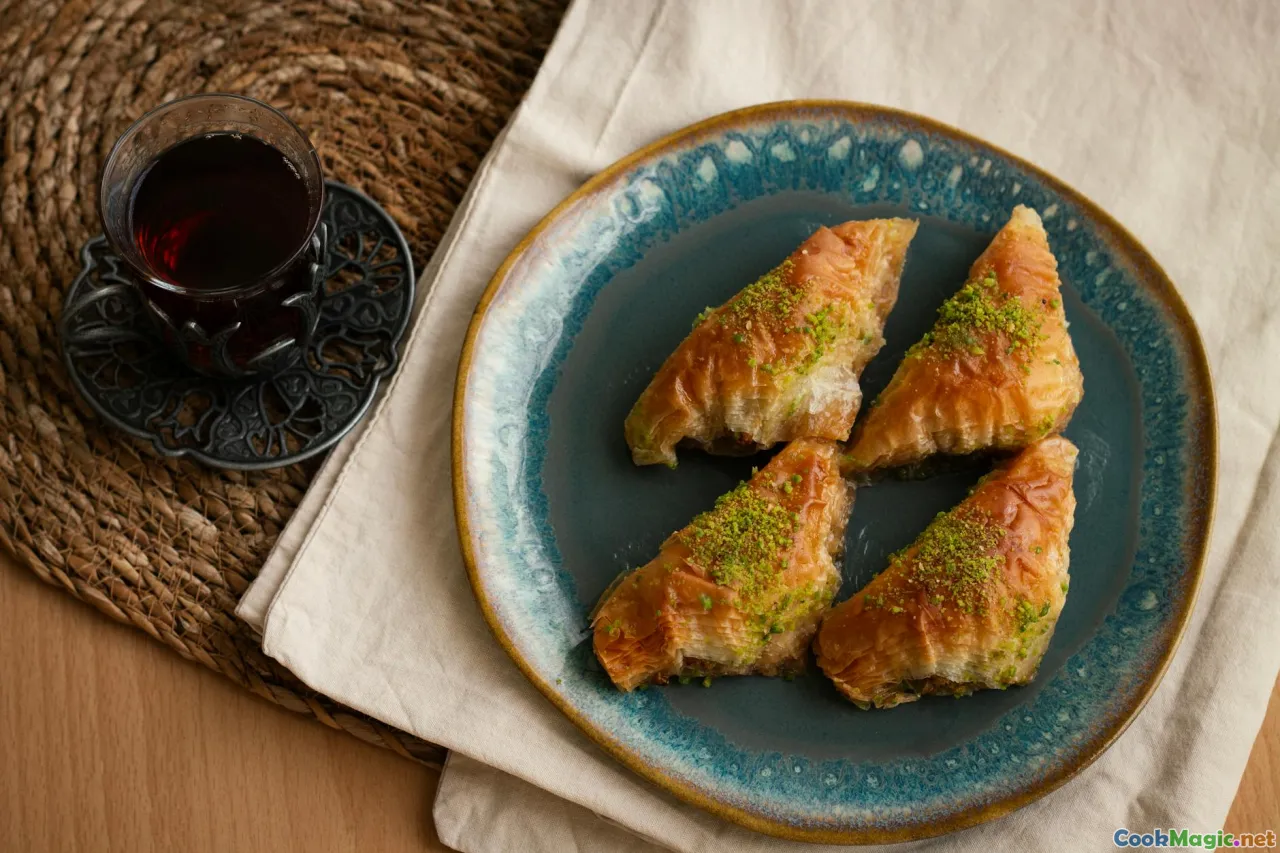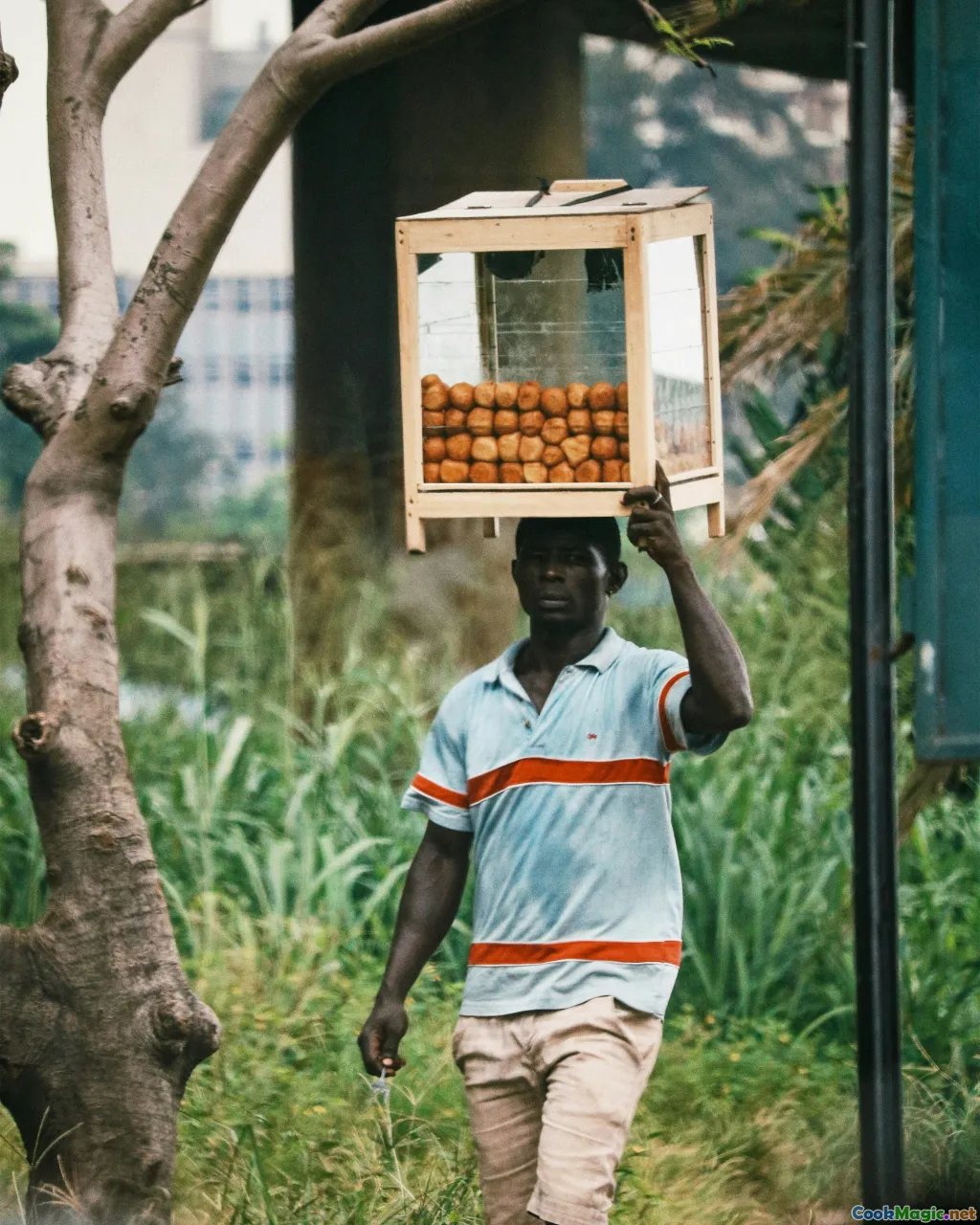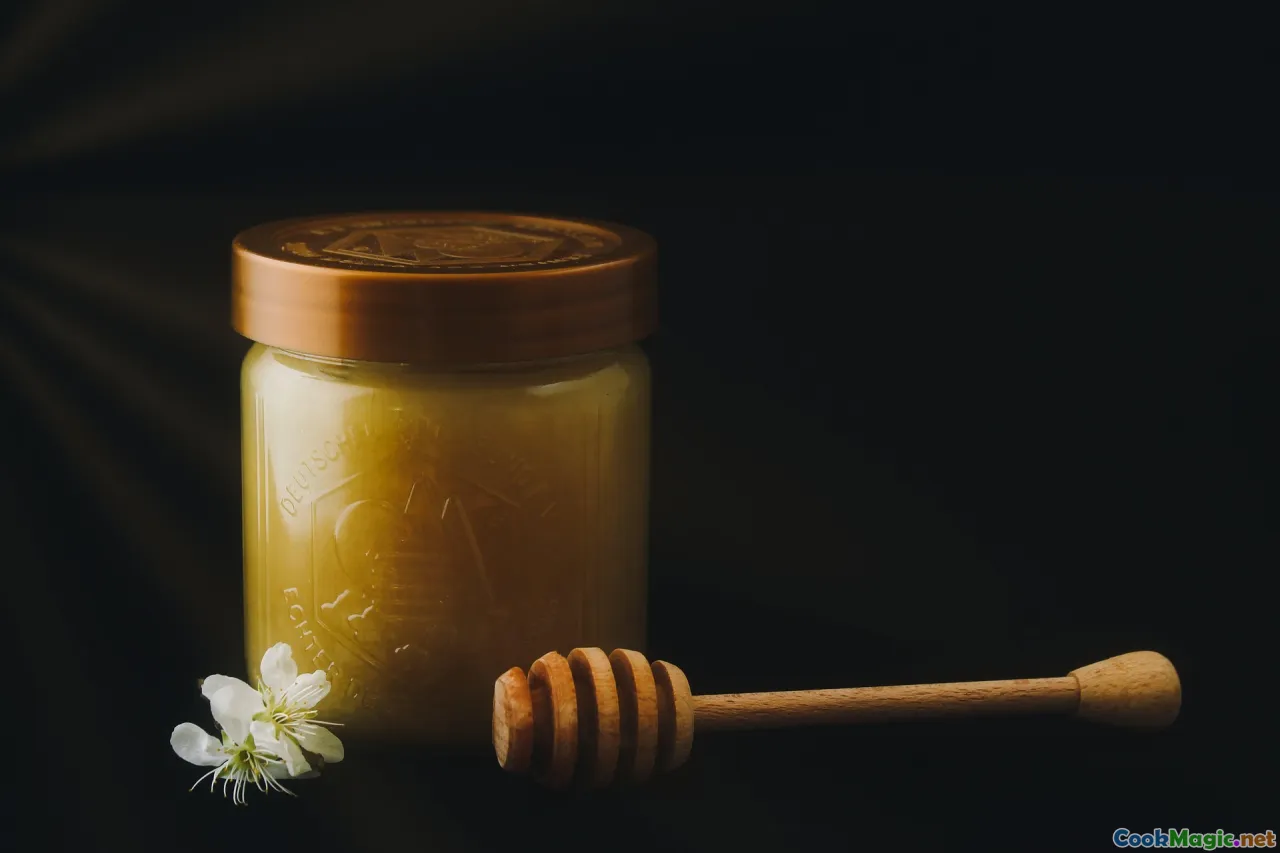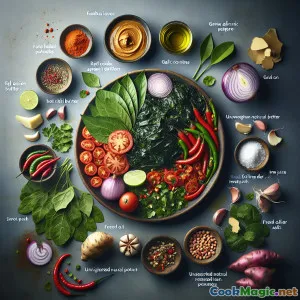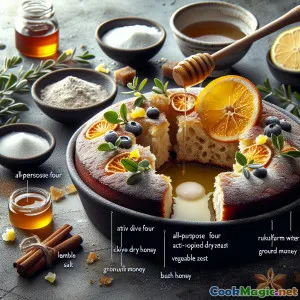
바삭바삭한 미카테 튀김과 야생 덤불 꿀 글레이즈
(Crispy Mikate Fritters with Wild Bush Honey Glaze)
(0 리뷰)재료
-
240 grams 다목적 밀가루
(Preferably sifted for lightness)
-
2 teaspoons 활성 건조 효모
(Ensures soft and airy fritters)
-
200 ml 미지근한 물
(Not hot or it’ll kill yeast)
-
25 grams 설탕
(Adds sweetness to dough)
-
1/2 teaspoon 소금
-
750 ml 식물성 기름
(튀김용)
-
80 ml 부쉬 허니 (생 야생 꿀)
(Use local/unfiltered for best flavor)
-
1 teaspoon 레몬 제스트
(Adds zesty brightness)
-
1/4 teaspoon 가루 계핏가루
(Optional, for extra warmth in the glaze)
(Preferably sifted for lightness)
(Ensures soft and airy fritters)
(Not hot or it’ll kill yeast)
(Adds sweetness to dough)
(튀김용)
(Use local/unfiltered for best flavor)
(Adds zesty brightness)
(Optional, for extra warmth in the glaze)
영양 정보
- 인분: 6
- 1인분 크기: 3 fritters (100g)
- Calories: 395 kcal
- Carbohydrates: 55 g
- Protein: 7 g
- Fat: 17 g
- Fiber: 2 g
- Sugar: 12 g
- Sodium: 160 mg
- Cholesterol: 0 mg
- Calcium: 28 mg
- Iron: 1.8 mg
조리법
-
1 - Activate the Yeast:
In a medium bowl, combine lukewarm water and sugar. Sprinkle yeast on top, stir, and let sit until foamy (about 7 minutes).
-
2 - Prepare the Batter:
Mix sifted flour and salt in a large bowl. Add activated yeast mixture. Stir with a wooden spoon until a sticky dough forms; do not knead.
-
3 - First Rise:
Cover the bowl with a clean towel and let the dough rise in a warm place for 30–40 minutes or until doubled in size.
-
4 - Heat Oil:
Heat vegetable oil in a deep saucepan or fryer to 175°C (350°F).
-
5 - Shape and Fry Mikate:
Wet your hands. Scoop palm-sized portions of dough and drop them gently into hot oil. Fry 4–6 at a time, turning to golden brown all sides (about 2–3 min per batch).
-
6 - Drain the Fritters:
Remove cooked fritters with a slotted spoon; drain on a paper towel-lined plate.
-
7 - Make Honey Glaze:
Warm wild bush honey gently in a small pan with lemon zest and ground cinnamon (if using) for 2–3 minutes; do not boil.
-
8 - Glaze and Serve:
Drizzle warm honey glaze generously over hot mikate. Serve immediately for the best texture.
In a medium bowl, combine lukewarm water and sugar. Sprinkle yeast on top, stir, and let sit until foamy (about 7 minutes).
Mix sifted flour and salt in a large bowl. Add activated yeast mixture. Stir with a wooden spoon until a sticky dough forms; do not knead.
Cover the bowl with a clean towel and let the dough rise in a warm place for 30–40 minutes or until doubled in size.
Heat vegetable oil in a deep saucepan or fryer to 175°C (350°F).
Wet your hands. Scoop palm-sized portions of dough and drop them gently into hot oil. Fry 4–6 at a time, turning to golden brown all sides (about 2–3 min per batch).
Remove cooked fritters with a slotted spoon; drain on a paper towel-lined plate.
Warm wild bush honey gently in a small pan with lemon zest and ground cinnamon (if using) for 2–3 minutes; do not boil.
Drizzle warm honey glaze generously over hot mikate. Serve immediately for the best texture.
바삭바삭한 미카테 튀김과 야생 덤불 꿀 글레이즈 :에 대한 자세한 정보
Mikate au Miel de Brousse — Deep Roots and Sweet Rewards
Mikate, the beloved Congolese street snack, embodies the spirit of communal gatherings and quintessential hospitality in the Democratic Republic of the Congo (DRC) and neighboring Central African countries. So popular and universal is this golden doughnut, that it appears, appropriately, under many monikers: puff-puffs in English West Africa, mihogo in Uganda, and with regional flavorings virtually everywhere wheat, oil, and sugar convene. While classic mikate is sometimes simply dusted with powdered sugar, 'Mikate au Miel de Brousse' elevates the experience—wrapping airy fritters with a fragrant cascade of wild bush honey, and touches of lemon and spice if you like.
History and Cultural Significance
Eating mikate is not an act of mere snacking; it's a rite. These yeasted doughnuts materialize at family gatherings and celebrations, serve as tokens of hospitality, and are indispensable on the lively street food scene throughout Kinshasa and beyond. Vendors fry them fresh daily: the enticing aroma puckers the bustling market air by morning, promising a uplifting start or a satisfying midday treat. While the classic recipes usually rely on standard kitchen sugars, the glimpse of 'bush' or wild honey tips a wink to the forests and fields deeply intertwined with Congolese identity, shifting the treat’s sweetness to twig-laced florals and a natural, robust character.
Culturally, mikate flourishes because it requires so little—just flour, yeast, water, oil for frying—yet rewards the maker with rich, nostalgic flavor and adaptable form: stuff them with beans, dip in peanut sauce, or (as here) glaze them with locally foraged honey.
Unique Aspects and Personal Thoughts
What makes Mikate au Miel de Brousse unique is not only the drizzle of wild honey but its invitation to pay tribute to resourceful ingredients and the kinship they represent. Real miel de brousse is harvested from deep, undomesticated places—acacia groves, mopane forests, or from hives dangled high in trees, sometimes protected by the local community as a special economic and ecological treasure. Each honey is a time capsule of its region—some floral, some resinous, some with earthy depth. If you cannot source this honey, any high-quality raw honey makes a fitting stand-in.
The visual shimmer of warm honey sliding over the doughnut’s crunchy shell is mouthwatering, but even beyond that, the aromatic interplay—a whiff of citrus zest or a background of cinnamon—offers a layered, unhurried delight. Served warm and almost ephemeral in their fleeting crispness, mikate fritters evoke their Congolese heritage most precisely not with ingredients, but in the sense of unhurried celebration and neighborly cheer. Sharing mikate — offering one to friends or family — is participating in a tradition much larger than the kitchen.
Tips & Notes
- Proofing patience: Letting the dough fully double is crucial for the aerated, chewy texture; don’t rush it, and avoid drafts which slow yeast activity.
- Oil temperature: If you have a thermometer, use it. If not, test with a small dab of dough—it should bubble actively and rise to the surface in 2–3 seconds, but not darken too quickly.
- Serving: Best hot & fresh, the outside stays crisp as the lush honey quickly seeps inside.
- Personal twists: Try with orange blossom water, green cardamom, or even a pinch of chili in your glaze for adventurous variations.
‘Mikate au Miel de Brousse’ stands elegantly at the crossroad of everyday comfort and wild, regional heritage—a delicious union inviting you not just to cook, but to savor the journey from rural apiary to urban market square, one golden mouthful at a time.

